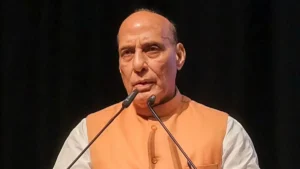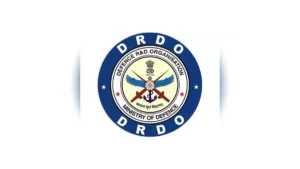In a significant move to bolster India’s maritime security and operational capabilities, Chief of Naval Staff (CNS) Admiral R. Hari Kumar recently concluded a pivotal visit to the Andaman and Nicobar Command (ANC), India’s only operational triservice command. His visit from February 6 to 9, 2024, underscored the Indian Navy’s commitment to enhancing its strategic posture and surveillance capabilities in the crucial maritime region.
Precision Approach Radar (PAR) Inauguration at INS Utkrosh
A highlight of Admiral Kumar’s visit was the inauguration of a state-of-the-art Precision Approach Radar (PAR) at INS Utkrosh. This advanced radar system is a game-changer for naval aviation, providing highly accurate horizontal and vertical guidance to aircraft, particularly under low visibility conditions such as heavy rain and fog. The deployment of the PAR is a testament to the Indian Navy’s efforts to ensure the safety and efficiency of its aviation operations in challenging weather conditions.
Integrated Underwater Harbour Defence and Surveillance System (IUHDSS) Launch
Another significant milestone achieved during Admiral Kumar’s visit was the inauguration of the Integrated Underwater Harbour Defence and Surveillance System (IUHDSS) at the Naval Jetty in Port Blair. The IUHDSS is a cutting-edge technology capable of detecting, identifying, and tracking both surface and underwater threats in the vicinity of the naval jetty. This system significantly enhances the security of Port Blair harbour, safeguarding it against potential maritime threats and ensuring the safety of vital naval assets.
Strengthening Communication and Operational Capability
Admiral Kumar’s visit also marked the inauguration of Naval Communication Network (NCN) Centres at INS Kohassa, INS Baaz, and INS Kardip. These centres are strategically designed to augment the communication and operational capabilities of the ANC. The introduction of the new NCN will facilitate enhanced real-time situational awareness and foster greater jointness in communication across the naval command.
Focus on Welfare and Infrastructure Development
Beyond strategic enhancements, Admiral Kumar’s visit emphasized the welfare of naval personnel. Accompanied by Kala Hari Kumar, President of the Navy Welfare and Wellness Association, he laid the foundation stone for sailors’ accommodation at Vijay Baugh. This initiative reflects the Indian Navy’s commitment to improving the living conditions and welfare of its personnel stationed at the ANC.
Engaging with Naval Personnel
A key aspect of Admiral Kumar’s visit was his interaction with personnel posted across various units and establishments within the Command. These interactions serve as a morale booster for the forces and offer the CNS insights into the challenges and requirements of the personnel on the ground.




 Indian Navy to Commission First Indigeno...
Indian Navy to Commission First Indigeno...
 Rajnath Singh Inaugurates 125 Border Inf...
Rajnath Singh Inaugurates 125 Border Inf...
 DRDO Transfers Seven Indigenous Technolo...
DRDO Transfers Seven Indigenous Technolo...







